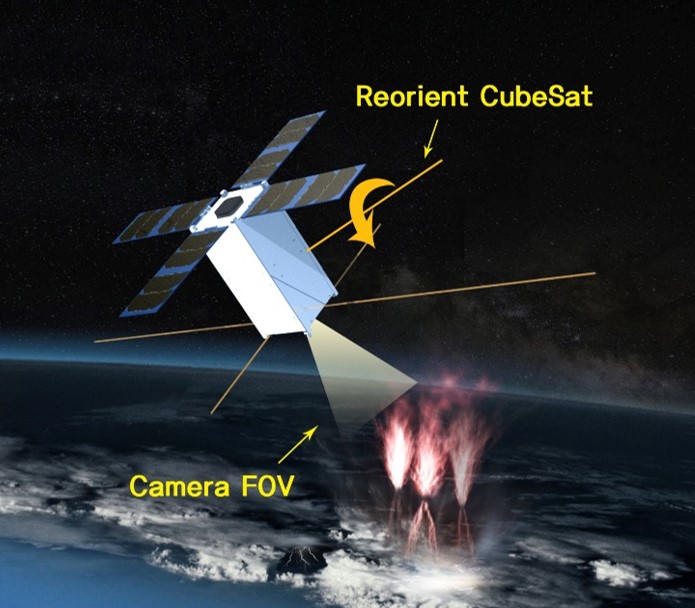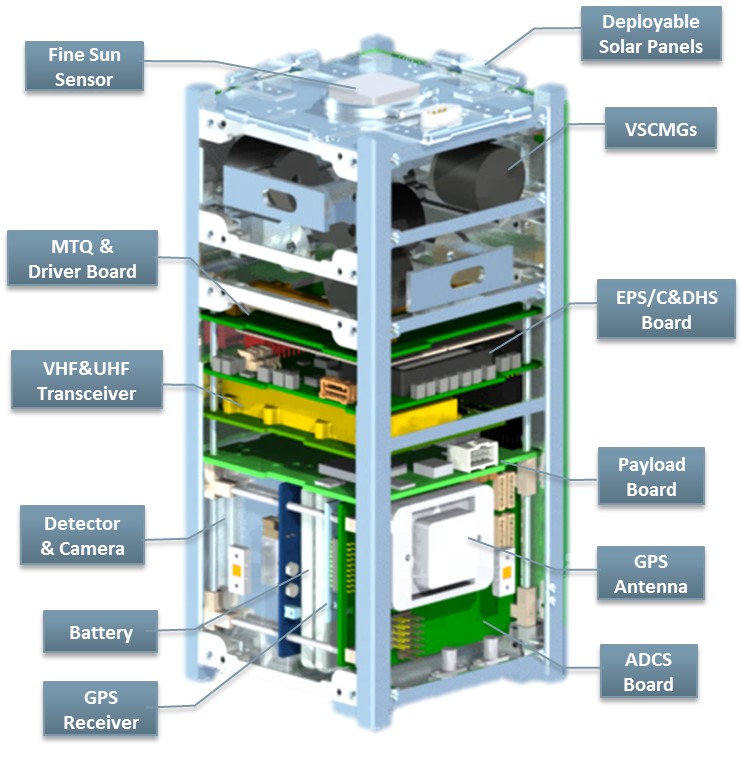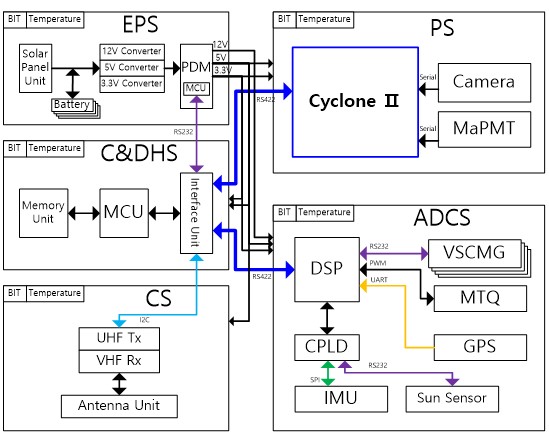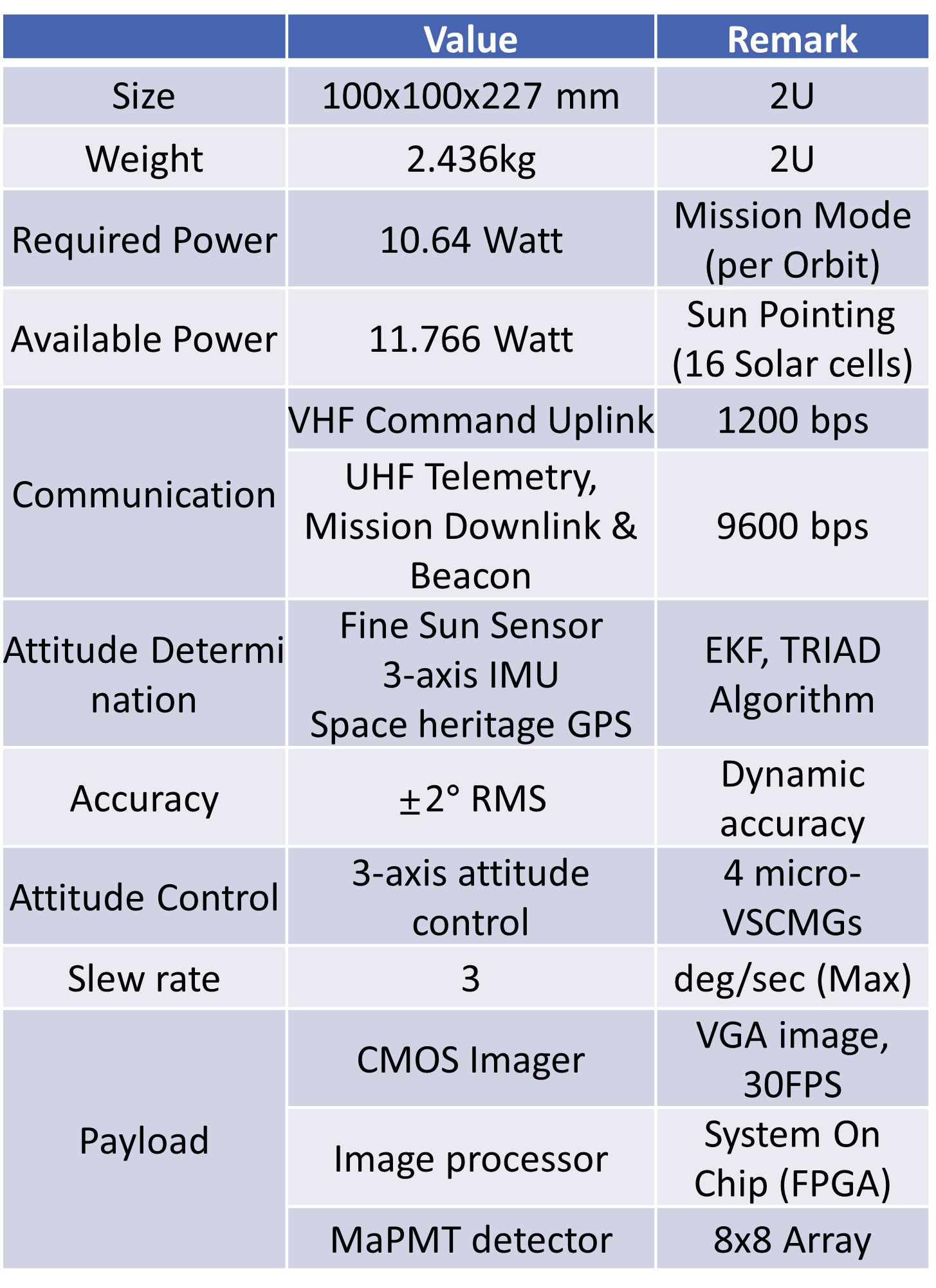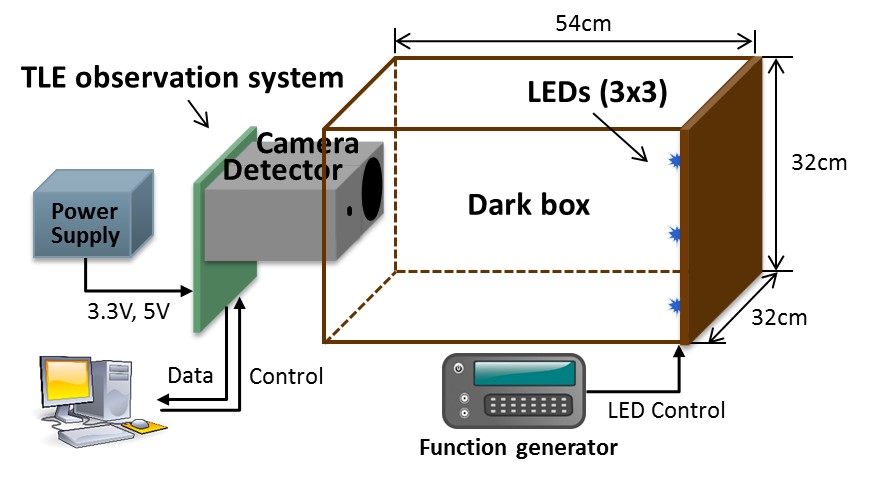Objective
Develop the 2U CubeSat, VisionCube
Primary mission
Observation of the transient luminous events, a.k.a. MegaLightning from the low Earth orbit
– Detect the event using a MaPMT (Multi-anode Photo Multiplier Tube) detector
– Reorient the CubeSat and acquire the TLE images
System Configuration
Payload system (PS)
Attitude Determination and Control system (ADCS)
Electrical Power system (EPS)
Command and Data Handling system (CDHS)
Communication system (CS)
Payload system (PS)
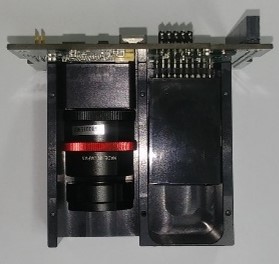
Ground test
To evaluate the performance of the TLE observation system, ground experiments have been performed. To do this, virtual TLE sources using UV LEDs with various wavelengths, attached to the wall inside of dark box with 3×3 array configuration, are employed.
Adjusted small power to mimic the weak intensity of the TLE occurence, the LEDs flashes randomly with the short duration (~5msec) and the TLE observation system should detect the LED and take images over the Region of interest where the TLE event occurs.

